The Article
Aladdin Cartridge From Origin Live
17th September 2018

Looking for a sonic genie? Give this moving iron a quick rub as Paul Rigby reviews Origin Live’s Aladdin
Most vinyl fans are familiar with moving magnet and moving coil cartridges but there’s more to hi-fi life than those two stalwarts. The moving iron configuration lies somewhere in between those two classic design fixtures.
This example, a custom-made variant of a Soundsmith design produced for Origin Live, is one of them.
Dominated by a composite chassis, this 10.27g cartridge is a derivative of the Soundsmith Carmen but adds a rather nifty energy management system found in more expensive Soundsmith cartridges.
Moving iron cartridges are intriguing things. The magnet inside stays still, as does the coil that sits alongside. What moves is the iron bit, fixed to the cantilever. This induces tiny voltages within the coils. The result? Firstly, the output is pretty high so you’d use this cartridge as you would a moving magnet (i.e. 47k Ohms load resistance and 100pF load capacitance).
The nude elliptical stylus on an aluminium cantilever is reported to be a pretty good tracker too. I was also intrigued to see that the cartridge tracks at just 1.4g.
Two things of note during the installation. Firstly, the cartridge body features a screw thread – hurrah! Hence, there’s no need for fiddly screw nuts to come into play. Secondly, be aware that the cartridge pins run at a slight downward angle. You have to slightly alter how you attach the tonearm wires to the rear of the cart because of this. ‘In and up’, instead of plain and simple ‘push on’. I didn’t see this initially and wondered why my tonearm wires kept falling off.
First off, I decided to test the cartridge with a moving magnet, a slightly cheaper Goldring that is also a bit of a super-charged MM in approach. Just to see what similarities, if any, can be drawn from the MM technology.
Then I decided to test the Aladdin with a more expensive moving coil, just to see how far the Aladdin could be pushed.
SOUND QUALITY
I began with the Goldring MM cartridge and a copy of Joe Jackson’s high energy jazz LP, Jumpin’ Jive and the track, Jumpin’ with Symphony Sid. This track is fast paced but packed with organic jazz instruments.
I have heard commentators declare that the Aladdin has ‘smooth mids’. On occasion, this pronouncement has been used as if to describe a disability. As if the mids were lacking in detail and mushy too boot. As such, these voices have the wrong end of the stick. The ‘smooth’ nature of the mids has the effect of softening the midrange detail, yes, but that’s the clue to up the gain because, in fact, the cartridge is busy lowering noise. I did this very thing, increasing my pre-amp gain by five clicks. Once done, the Aladdin entered into a new sonic phase.
The effect of this gain increase was to enhance the bass, giving it a greater and more powerful role in the mix, spreading over the lower areas of the soundstage and offering a significant foundation to the song while adding a sense of force from the sax. That is, force from extra breath behind the sax during crescendos, giving that instrument a smooth (yes) but also organic and naturalistic manner.
Treble from the cymbals never lost the effective transient strike but did gain a sense of maturity. That is, the cymbals hits were not something that merely made a noise but reacted like a large piece of metal. The cymbal strike talked a more complex story via the Aladdin. This sense of being ‘grown up’, when compared to the moving magnet design, continued during the later vocal section. Both emotion and texture during the delivery was heard here but the most important aspect of the vocal performance was the ease and naturalistic flow. There was no apparent effort being made, which gave the impression that the singer was enjoying himself. The song was sung, in fact, with a smile.
I then pushed the MC One moving coil into the picture and played that The Beatles parody LP, the self-titled album from The Rutles and the stone cold classic, Cheese and Onions.
Compared to the moving coil, there might be a slight restriction in dynamic reach from the Aladdin and possibly a touch less precision in the upper mids, especially around the introductory piano, relating to that but there is also so much right with the Aladdin that the cartridge still came disturbingly close to the £1k moving coil design. The sheer insight of the midrange and the associated clarity was a real highlight, here. The percussion detail was excellent, especially as it blended well with the instrumental separation. This air and space around the midrange did wonderful things to the violins and cellos during the mid to later part of the song, allowing the ear to better hear bow strokes over the strings while the normally rather shy electric guitar was easily ‘visible’ here.
CONCLUSION
In short? A triumph! For the price, the Aladdin performs brilliantly, offering the ear detail and lucidity but doing so with a craft that can be quite stunning. Even when you remove the price as a factor the Aladdin is a real threat to the competition, even to more expensive moving coil designs. And all of this connected to a moving magnet phono amp? Make sure that phono amp is a top quality design, don’t skimp here if you want to see the Aladdin perform. Rub the Aladdin’s ego by doing that and the sonic treasure will indeed be yours.
ORIGIN LIVE ALADDIN CARTRIDGE
Price: £630
Tel: 02380 578877
Web: www.originlive.com
GOOD: clarity, midrange insight, price, bass detail, instrumental separation
BAD: nothing
RATING: 9
[Don’t forget to check out my Facebook Group, The Audiophile Man: Hi-Fi & Music here: www.facebook.com/groups/theaudiophileman for exclusive postings, exclusive editorial and more!]
REFERENCE
Avid Acutus turntable
SME IV tonearm
Van den Hul MC One Special cartridge
Goldring 1042 cartridge
Icon PS3 phono amplifier
Aesthetix Calypso pre-amp
Icon Audio MB845 Mk.II monoblock amplifiers
Quad ESL-57 speakers with One Thing upgrade
Vertex AQ, Gekko, Black Rhodium & Tellurium Q cable
Blue Horizon Professional Rack System
Harmonic Resolution Systems Noise Reduction Components
All vinyl was cleaned using an Audio Desk’s Ultrasonic Pro Vinyl Cleaner

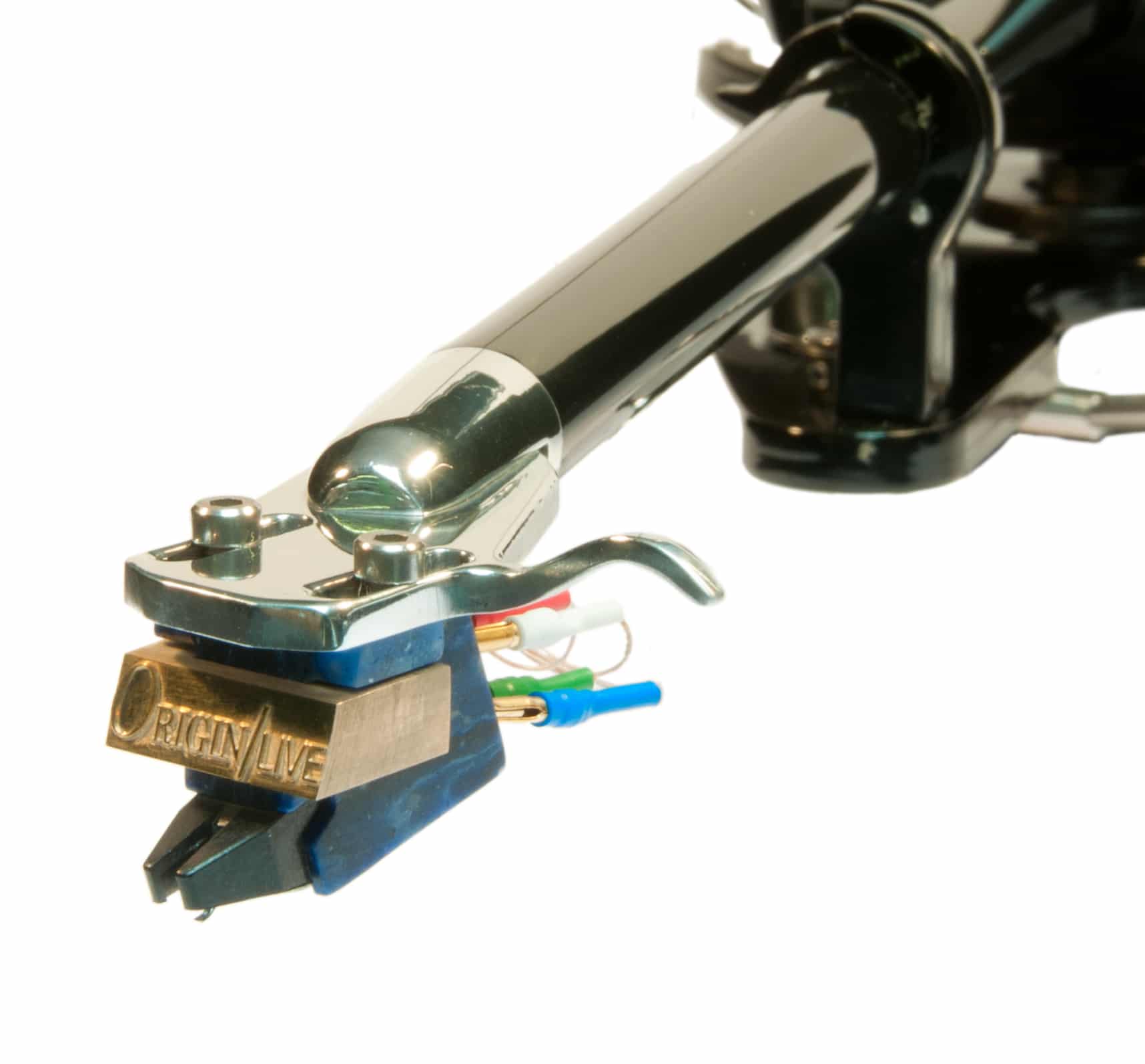
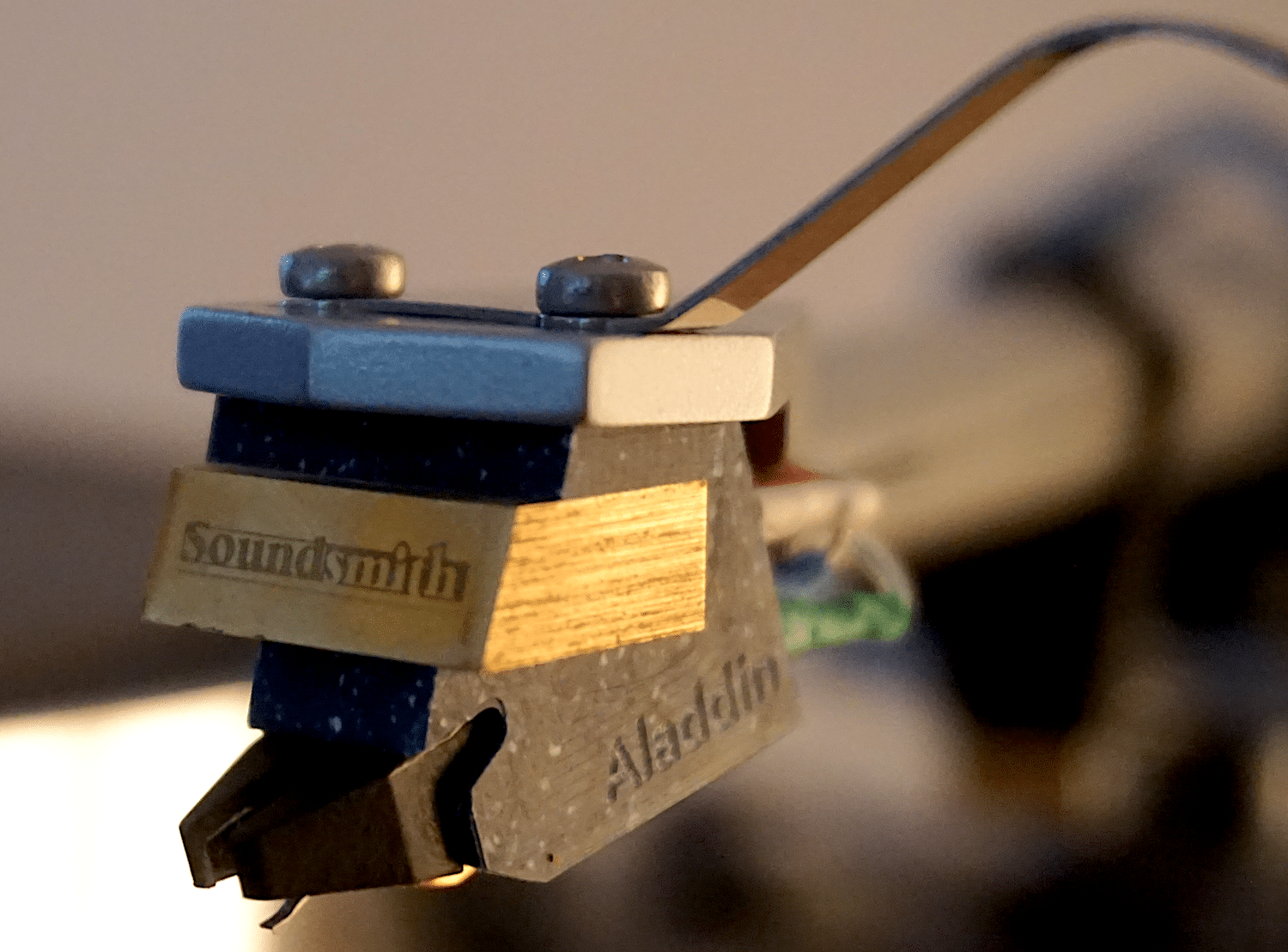
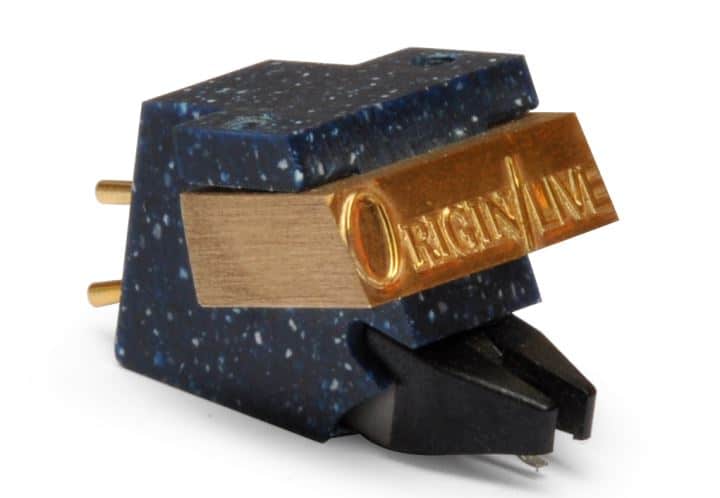
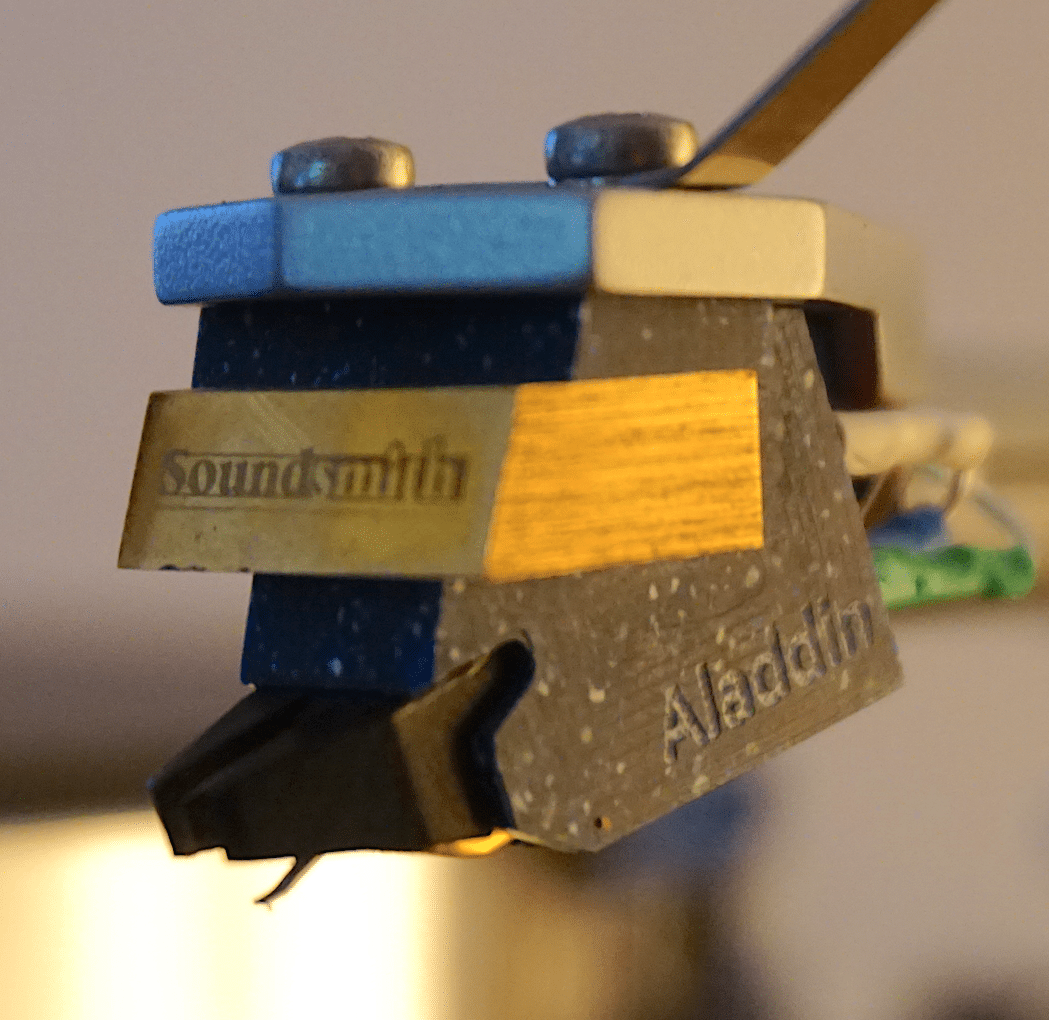
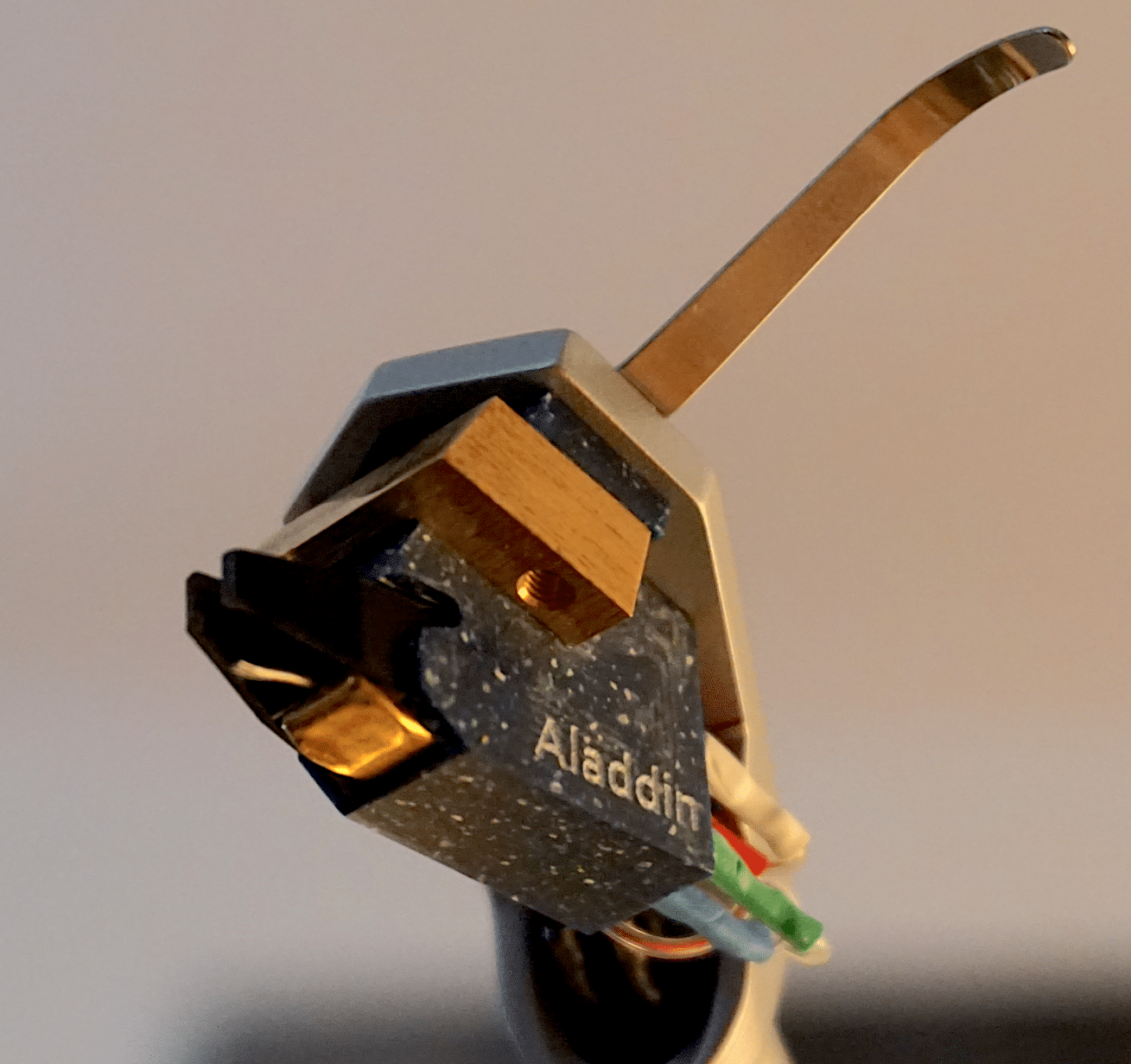
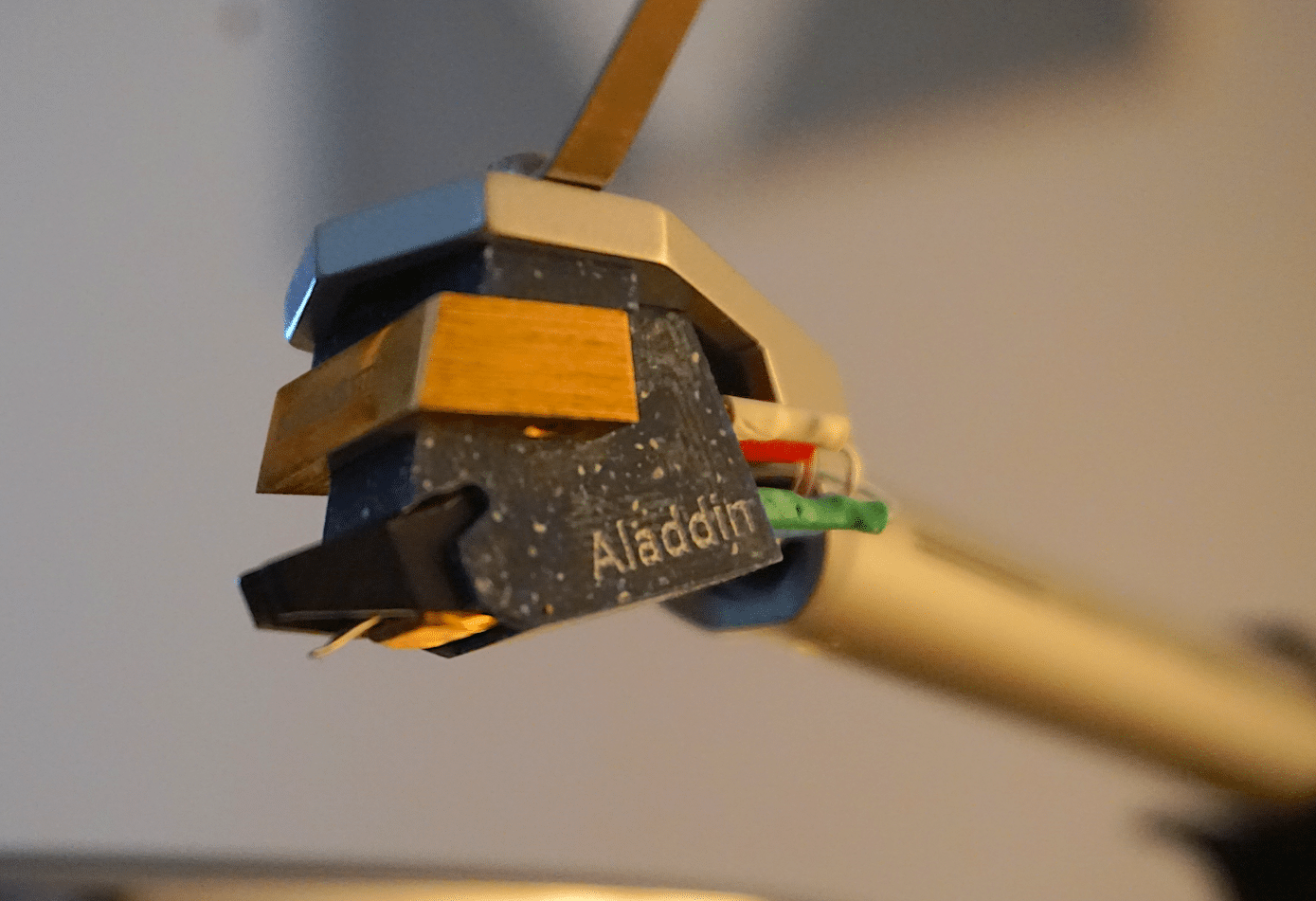
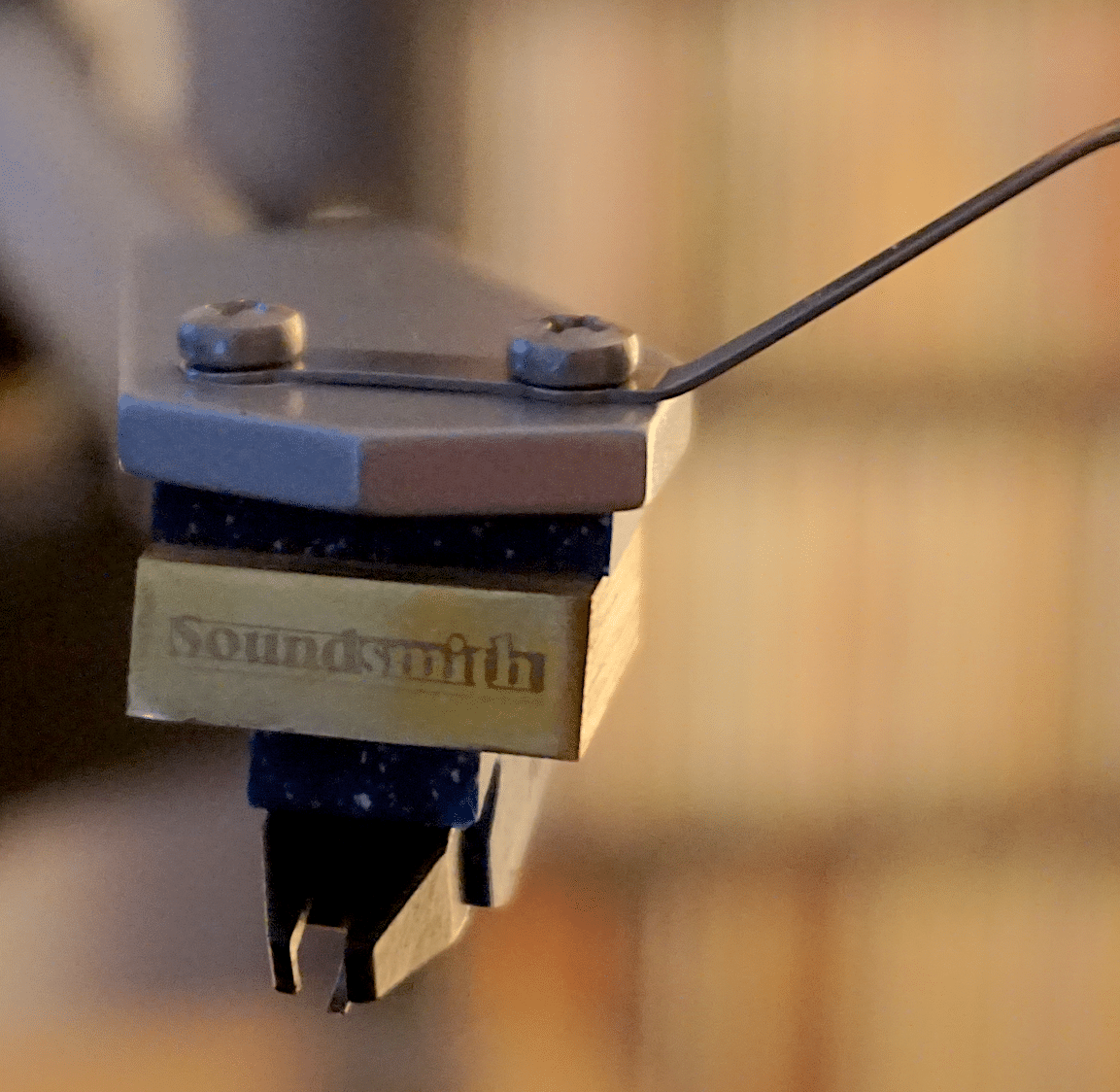



Good to see you are giving the moving iron cartridge the exposure it so deserves, in comparison to moving coils my findings are the apparent loss of detail is not actually a loss, it’s the absence of an artefact that is a moving coil trait. One slight issue is the line -“This produces a magnetic field from the coils. “ Рactually it disturbs the magnetic field and induces a current flow in the coils.
Thanks for your comments, Andy. I hope to feature more Moving Irons in the future. Thanks for your techie clarification too. I’ll tweak my text.
Hi Paul,
Having had an SMMC20EN for some time on a Beogram 4000 turntable—the original design then—I know the sound well. It does exactly what you say, and I must say that midrange is indeed perfectly flat, not at all recessed. Treble is not dull at all, quite unlike the B&O carts of yore.
A thoroughly enjoyable listen, almost CD like.
Thanks for your insight and considered thoughts Jacques.
Hi Paul…
Excellent and insightful review, as always. I hate asking troubleshooting help on any public site not meant for such, but I am at wits end. As an owner of a Soundsmith Carmen, I noticed your headshell wiring is different than my SS cart. Did you swap your green and blue grounds for a particular reason? Aside from the obvious, conditional hum issues I am experiencing, I noticed that Soundsmith appears to have an alternate or rare pin position scheme in the rear of the cartridge. Can you confirm this or clarify?
Thanks for the question Jeff and you’re always welcome to ask, not a problem. Ah, you’ve spotted my “Let’s quickly wire it up for photography.” thing 🙂 Blue should have been green and was during testing I recall. Are you sure the hum is cart related? Nothing turntable connected? Or even the amp? Have you tried to eliminate different components one at a time? (play CD to see if you can hear a hum, try different carts, a different turntable, etc). Sorry if you have but it’s often something which is over looked. If it is the cart, how about loose cables? Or pins not pushed fully home? Let me know how you get on.
Hi Paul
I’m sure I’m wrong but in your images is the cartridge wired correctly?
I’m using a sound smith and worried I may be doing something wrong
Sorry just read a previous reply now feel an idiot
Take care
Gary
Hi Gary – not to worry. I’m just happy that my readers are so sharp eyed on these matters 🙂